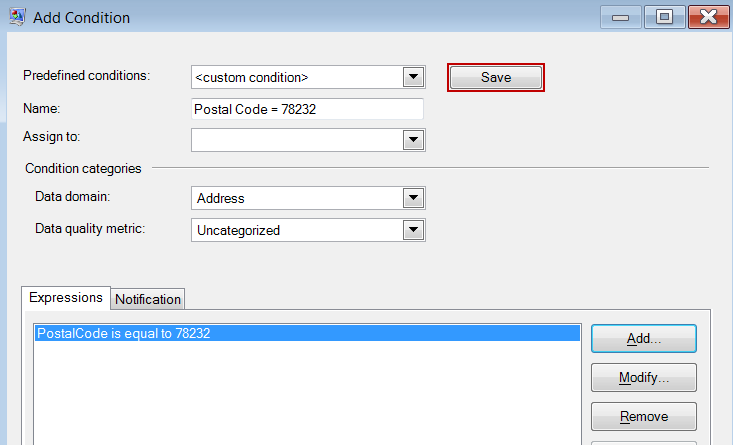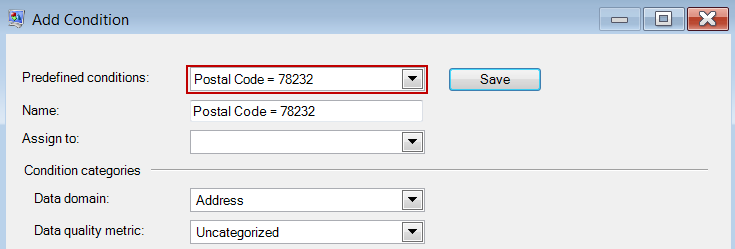Adding or Modifying Conditions and Expressions
A condition defines the criteria used to determine if a record is an "exception" and needs to be routed for manual review. Typically this means that you want to define conditions that can consistently identify records that either failed automated processing earlier in the dataflow or that have a low degree of confidence and therefore should be reviewed manually.
The Exception Monitor stage enables you to create predefined conditions and custom conditions using the Add Condition dialog box. Predefined conditions are available to all dataflows, while custom conditions are available only to the dataflows for which they were created. The configuration process is almost identical for both types; however, to create a predefined condition you must save the condition by completing the fields and clicking Save, shown in the red box below.

After you have saved a custom condition, the Predefined conditions field changes to show the name of the condition rather than "<custom condition>".

After you have created predefined or custom conditions, they will appear on the Conditions tab of the Exception Monitor Options dialog box. As shown in the following image, the icon next to the name of the condition identifies it as either a predefined condition or a custom condition. A dual-document icon designates a predefined condition, and a single document icon designates a custom condition.
